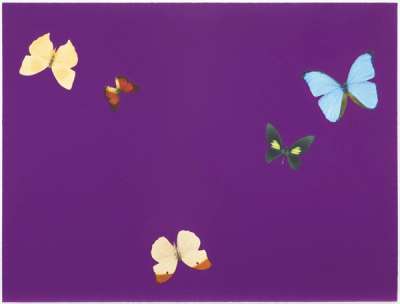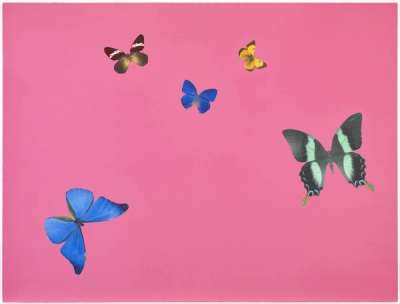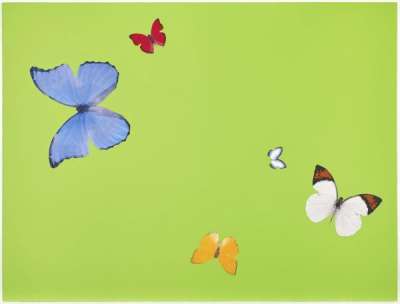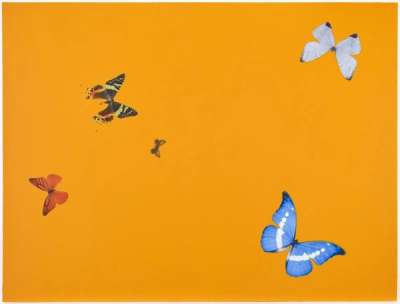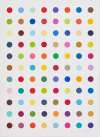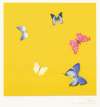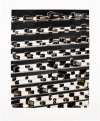Lessons
In Love
Damien Hirst’s 2018 Lessons in Love is a suite of four prints, in which hyperrealist butterflies scatter on block colour backdrops. They are archetypally Hirstian, especially given their resemblance to his much earlier Butterfly Paintings (1991)— the first work Hirst created with butterflies, now one of his most recognisable motifs.
Damien Hirst Lessons In Love For sale
Lessons In Love Market value
Auction Results
| Artwork | Auction Date | Auction House | Return to Seller | Hammer Price | Buyer Paid |
|---|---|---|---|---|---|
 Be Thoughtful Damien Hirst Signed Print | 5 Jun 2025 | Phillips London | £6,375 | £7,500 | £10,000 |
Sell Your Art
with Us
with Us
Join Our Network of Collectors. Buy, Sell and Track Demand
Meaning & Analysis
Damien Hirst’s 4-part Lessons in Love series is recognisable in its use of bold, block colour backdrops and scattered hyper realistic butterflies. Depicted with bright, block coloured backdrops, each print in this series shows five hyperrealist butterflies scattered across the composition. Much like many of Hirst’s works, the series is formulaic in its repetition of subject matter and variations of composition.
Hirst’s intuitive colour choice is based on aesthetic and non-rational demands that have remained in his practice since his art training at Goldsmiths from 1986 to 1989. Since the late 1980s, Hirst has worked across a variety of mediums including installation, sculpture, painting and drawing, to investigate the relationship between art, life and death. Hirst has explained: “Art’s about life and it can’t really be about anything else…there isn’t anything else.” Hirst’s use of the naturalistic butterfly motif alongside an intuitive choice of colour is representative of his desire to dissolve the boundaries between art, science and popular culture.
Lessons In Love series is reminiscent of his 1991 In and Out of Love (Butterfly Paintings and Ashtrays) installation that fixed the bodies of dead butterflies into monochrome gloss paint, surrounded by overflowing ashtrays. The choice of household gloss was intended to “look like an accident of paint with butterflies stuck on it,” according to the artist. This effect is reflected in the Lessons in Love series that contrasts the highly realistic images of butterflies in each print against the solid, bright colour field backdrops.
